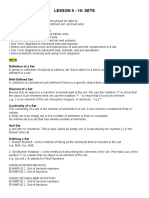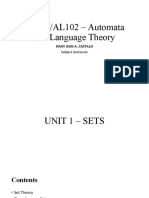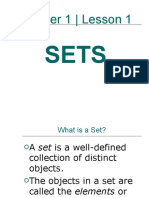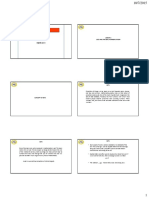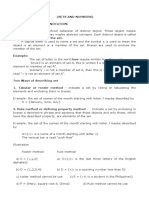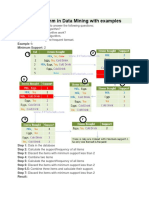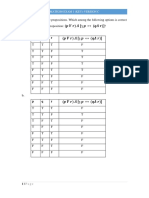0% found this document useful (0 votes)
34 views5 pagesLecture Language of Math Last Part1
A set is a collection of distinct objects defined without order or repetition. Sets are represented using capital letters and curly braces. An element is in a set if it is contained within the braces and not in the set otherwise. There are different types of sets including empty, finite, and infinite sets. Venn diagrams provide a visual representation of sets and set relationships like unions, intersections, complements and differences.
Uploaded by
pasionnovelyn04Copyright
© © All Rights Reserved
We take content rights seriously. If you suspect this is your content, claim it here.
Available Formats
Download as DOCX, PDF, TXT or read online on Scribd
0% found this document useful (0 votes)
34 views5 pagesLecture Language of Math Last Part1
A set is a collection of distinct objects defined without order or repetition. Sets are represented using capital letters and curly braces. An element is in a set if it is contained within the braces and not in the set otherwise. There are different types of sets including empty, finite, and infinite sets. Venn diagrams provide a visual representation of sets and set relationships like unions, intersections, complements and differences.
Uploaded by
pasionnovelyn04Copyright
© © All Rights Reserved
We take content rights seriously. If you suspect this is your content, claim it here.
Available Formats
Download as DOCX, PDF, TXT or read online on Scribd
/ 5










